Behavior of Top-Blown Jet under a New Cyclone Oxygen Lance during BOF Steelmaking Process
Abstract
:1. Introduction
2. Materials and Methods
2.1. Physical Model and Model Validation
2.2. Numerical Model
- The Newtonian fluid is adopted to simulate the fluid flow in the converter;
- Oxygen is assumed as an ideal gas;
- A no-slip condition is applied to the wall, and the heat transfer process between the wall and molten bath is ignored. The standard wall function is applied to solve the average velocity near the wall.
2.3. Boundary Conditions and Solution Methods
2.4. Optimization of Cyclone Oxygen Lance
3. Discussion and Results
3.1. Effect of Cyclone Oxygen Lance on Supersonic Region
3.2. Effect of Cyclone Oxygen Lance on Droplet Generation
3.3. Effect of Cyclone Oxygen Lance on Upward Splashing and Penetrating Depth
3.4. Effect of Cyclone Oxygen Lance on Turbulence Kinetic Energy Distribution
4. Conclusions
- Compared with traditional Laval oxygen lance, cyclone oxygen lance can retain higher impact velocity and prolong the supersonic region. Moreover, there is no jet coalescence because the cyclone nozzle only has one exit. Both of these aspects are useful for the jets impinging on the molten bath.
- The cyclone nozzle has a larger droplet formation rate than that of the conventional nozzle, which can help the converter to promote productivity. Similar to the traditional Laval nozzle, the droplet formation rate decreases with increasing lance height.
- Compared with the conventional Laval oxygen lance, the cyclone oxygen lance can reduce the upward splashing and, thereby, reduce the physical erosion of the furnace lining as a result of part of the jet pressure shifting from the axis of the oxygen lance to the tangential direction. In the steelmaking process, reducing the erosion of the furnace lining is of great economic benefit to the steel-making plant. Similar to the law of the Laval nozzle affecting the molten bath, the penetration depth is inversely proportional to the lance height and proportional to the operating pressure for the new nozzle.
- Under the same inlet flow rate, pressure, and lance height, the penetration depth formed by the cyclone oxygen lance jet impinging on the molten bath is larger than that of the conventional Laval nozzle. Therefore, the cyclone oxygen lance can increase the blowing efficiency and improve the utilization rate of oxygen and metal yield, which is of great economic benefit to the steel-making plant.
- The turbulent kinetic energy and turbulent dissipation rate of jets initially increases and then decreases along the axial direction. The maximum value of turbulent kinetic energy and turbulent dissipation rate of jets increases with increasing operating pressure. The average value of the turbulent kinetic energy of the cyclone nozzle is larger than that of the conventional Laval nozzle at the interface between oxygen and slag, which may be related to the tornado jet formed by the cyclone nozzle. The increasing of the turbulent kinetic energy can result in more intense fluctuations at the interface between oxygen and molten slag, which can improve the slagging and, thus, promote the blowing efficiency.
5. Patents
Author Contributions
Funding
Institutional Review Board Statement
Informed Consent Statement
Data Availability Statement
Acknowledgments
Conflicts of Interest
References
- Higuchi, Y.; Tago, Y. Effect of lance design on jet behavior and spitting rate in top blown process. ISIJ Int. 2001, 41, 1454–1459. [Google Scholar] [CrossRef] [Green Version]
- Fabritius, T.M.J.; Luomala, M.J.; Virtanen, E.O.; Tenkku, H.; Fabritius, T.L.J.; Siivola, T.P.; Härkki, J.J. Effect of bottom nozzle arrangement on splashing and spitting in combined blowing converter. ISIJ Int. 2002, 42, 861–867. [Google Scholar] [CrossRef]
- Sabah, S.; Brooks, G. Splash distribution in oxygen steelmaking. Metall. Mater. Trans. B 2015, 46, 863–872. [Google Scholar] [CrossRef]
- Liu, G.; Liu, K.; Han, P.; Chen, Y. Numerical investigation on behaviors of interlaced jets and their interaction with bath in BOF steelmaking. AIP Adv. 2019, 9, 075202. [Google Scholar] [CrossRef]
- Sun, Y.H.; Liang, X.T.; Zeng, J.H.; Chen, J.; Chen, L. Numerical simulation and application of oxygen lance in 120t BOF of PANSTEEL. Ironmak. Steelmak. 2016, 44, 76–80. [Google Scholar] [CrossRef]
- He, C.; Yang, N.; Huang, Q.; Liu, C.; Wu, L.; Hu, Y.; Fu, Z.; Gao, Z. A Multi-Phase Numerical Simulation of a Four-Nozzle Oxygen Lance Top-Blown Convertor. Procedia Earth Planet. Sci. 2011, 2, 64–69. [Google Scholar] [CrossRef] [Green Version]
- Alam, M.; Naser, J.; Brooks, G.; Fontana, A. A Computational Fluid Dynamics Model of Shrouded Supersonic Jet Impingement on a Water Surface. ISIJ Int. 2012, 52, 1026–1035. [Google Scholar] [CrossRef] [Green Version]
- Dong, K.; Zhu, R.; Liu, F. Behaviours of supersonic oxygen jet with various Laval nozzle structures in steelmaking process. Can. Metall. Q. 2018, 58, 285–298. [Google Scholar] [CrossRef]
- Li, Q.; Li, M.; Kuang, S.B.; Zou, Z. Computational study on the behaviours of supersonic jets and their impingement onto molten liquid free surface in BOF steelmaking. Can. Metall. Q. 2014, 53, 340–351. [Google Scholar] [CrossRef]
- Alam, M.; Naser, J.; Brooks, G. Computational Fluid Dynamics Simulation of Supersonic Oxygen Jet Behavior at Steelmaking Temperature. Metall. Mater. Trans. B 2010, 41, 636–645. [Google Scholar] [CrossRef]
- Hosseini, M.; Arasteh, H.; Afrouzi, H.; Toghraie, D. Numerical simulation of a falling droplet surrounding by air under electric field using VOF method: A CFD study. Chin. J. Chem. Eng. 2020, 28, 2977–2984. [Google Scholar] [CrossRef]
- Azadbakhti, R.; Pourfattah, F.; Ahmadi, A.; Akbari, O.A.; Toghraie, D. Eulerian–Eulerian multi-phase RPI modeling of turbulent forced convective of boiling flow inside the tube with porous medium. Int. J. Numer. Methods Heat Fluid Flow 2019, 30, 2739–2757. [Google Scholar] [CrossRef]
- Nemati, M.; Abady, A.R.S.N.; Toghraie, D.; Karimipour, A. Numerical investigation of the pseudopotential lattice Boltzmann modeling of liquid–vapor for multi-phase flows. Phys. A Stat. Mech. Appl. 2018, 489, 65–77. [Google Scholar] [CrossRef]
- Sun, Y.-L.; Rahmani, A.; Saeed, T.; Zarringhalam, M.; Ibrahim, M.; Toghraie, D. Simulation of deformation and decomposition of droplets exposed to electro-hydrodynamic flow in a porous media by lattice Boltzmann method. Alex. Eng. J. 2022, 61, 631–646. [Google Scholar] [CrossRef]
- Toghaniyan, A.; Zarringhalam, M.; Akbari, O.A.; Shabani, G.A.S.; Toghraie, D. Application of lattice Boltzmann method and spinodal decomposition phenomenon for simulating two-phase thermal flows. Phys. A Stat. Mech. Appl. 2018, 509, 673–689. [Google Scholar] [CrossRef]
- Jia, Y.; Zeng, M.; Barnoon, P.; Toghraie, D. CFD simulation of time-dependent oxygen production in a manifold electrolyzer using a two-phase model. Int. Commun. Heat Mass Transf. 2021, 126, 105446. [Google Scholar] [CrossRef]
- Liu, F.; Sun, D.; Zhu, R.; Zhao, F.; Ke, J. Effect of nozzle twisted oxygen lance on flow field and dephosphorisation rate in converter steelmaking process. Ironmak. Steelmak. 2016, 44, 640–648. [Google Scholar] [CrossRef]
- Sambasivam, R.; Lenka, S.N.; Durst, F.; Bock, M.; Chandra, S.; Ajmani, S.K. A New Lance Design for BOF Steelmaking. Metall. Mater. Trans. B 2007, 38, 45–53. [Google Scholar] [CrossRef]
- Li, Q.; Li, M.; Kuang, S.; Zou, Z. Numerical Simulation of the Interaction Between Supersonic Oxygen Jets and Molten Slag–Metal Bath in Steelmaking BOF Process. Metall. Mater. Trans. B 2015, 46, 1494–1509. [Google Scholar] [CrossRef]
- Meidani, A.R.N.; Isac, M.; Richardson, A.; Cameron, A.; Guthrie, R.I.L. Modelling shrouded supersonic jets in metallurgical reactor vessels. ISIJ Int. 2004, 44, 1639–1645. [Google Scholar] [CrossRef] [Green Version]
- Cao, L.L.; Liu, Q.; Wang, Z.; Li, N. Interaction behaviour between top blown jet and molten steel during BOF steelmaking process. Ironmak. Steelmak. 2016, 45, 239–248. [Google Scholar] [CrossRef]
- Lv, M.; Zhu, R. Research on coherent jet oxygen lance in BOF steelmaking process. Metall. Res. Technol. 2019, 116, 502. [Google Scholar] [CrossRef]
- Li, M.; Li, Q.; Kuang, S.B.; Zou, Z. Coalescence Characteristics of Supersonic Jets from Multi-Nozzle Oxygen Lance in Steelmaking BOF. Steel Res. Int. 2015, 86, 1517–1529. [Google Scholar] [CrossRef]
- Asahara, N.; Naito, K.-I.; Kitagawa, I.; Matsuo, M.; Kumakura, M.; Iwasaki, M. Fundamental Study on Interaction between Top Blown Jet and Liquid Bath. Steel Res. Int. 2011, 82, 587–594. [Google Scholar] [CrossRef]
- Cao, L.L.; Wang, Y.N.; Liu, Q.; Feng, X.M. Physical and Mathematical Modeling of Multiphase Flows in a Converter. ISIJ Int. 2018, 58, 573–584. [Google Scholar] [CrossRef] [Green Version]
- Higuchi, Y.; Tago, Y. Effect of nozzle twisted lance on jet behavior and spitting rate in top blown process. ISIJ Int. 2003, 43, 1410–1414. [Google Scholar] [CrossRef] [Green Version]
- Lv, M.; Zhu, R.; Wang, H.; Bai, R. Simulation and Application of Swirl-Type Oxygen Lance in Vanadium Extraction Converter. Steel Res. Int. 2013, 84, 304–312. [Google Scholar] [CrossRef]
- Subagyo, G.B.; Coley, K.; Irons, G. Generation of droplets in slag-metal emulsions through top gas blowing. Chem. Eng. Sci. 2002, 57, 663. [Google Scholar] [CrossRef] [Green Version]
- Rout, B.K.; Brooks, G.; Rhamdhani, M.A.; Li, Z. Modeling of droplet generation in a top blowing steelmaking process. Metall. Mater. Trans. B 2016, 47, 3350–3361. [Google Scholar] [CrossRef] [Green Version]
- He, Q.L.; Standish, N. A model study of droplet generation in the BOF steelmaking. ISIJ Int. 1990, 30, 305–309. [Google Scholar] [CrossRef]
- Standish, N. Drop generation due to an impinging jet and the effect of bottom blowing in the steelmaking vessel. ISIJ Int. 1989, 29, 455–461. [Google Scholar] [CrossRef] [Green Version]
- Sumi, I.; Kishimoto, Y.; Kikuchi, Y.; Igarashi, H. Effect of high-temperature field on supersonic oxygen jet behavior. ISIJ Int. 2006, 46, 1312–1317. [Google Scholar] [CrossRef] [Green Version]
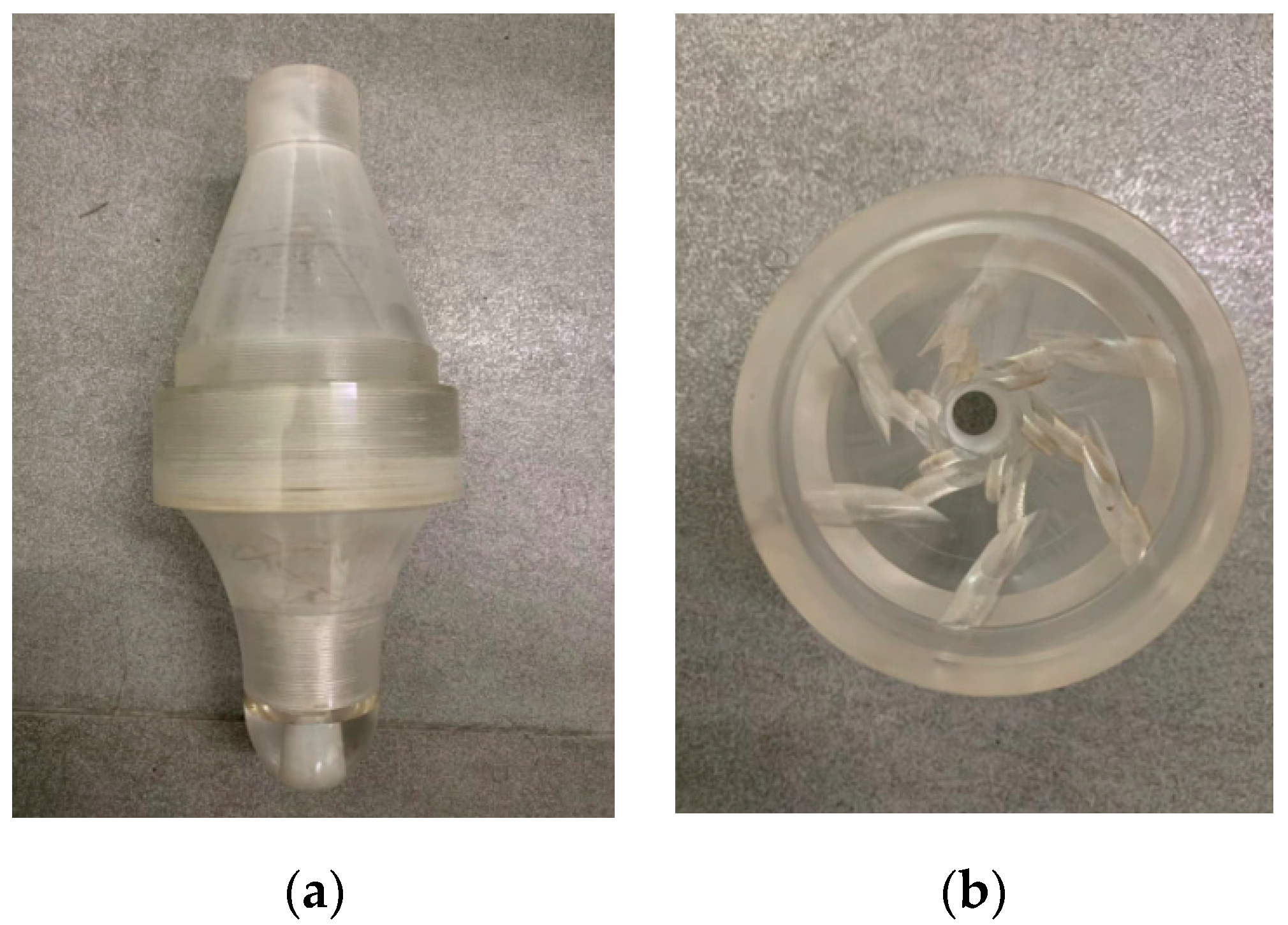
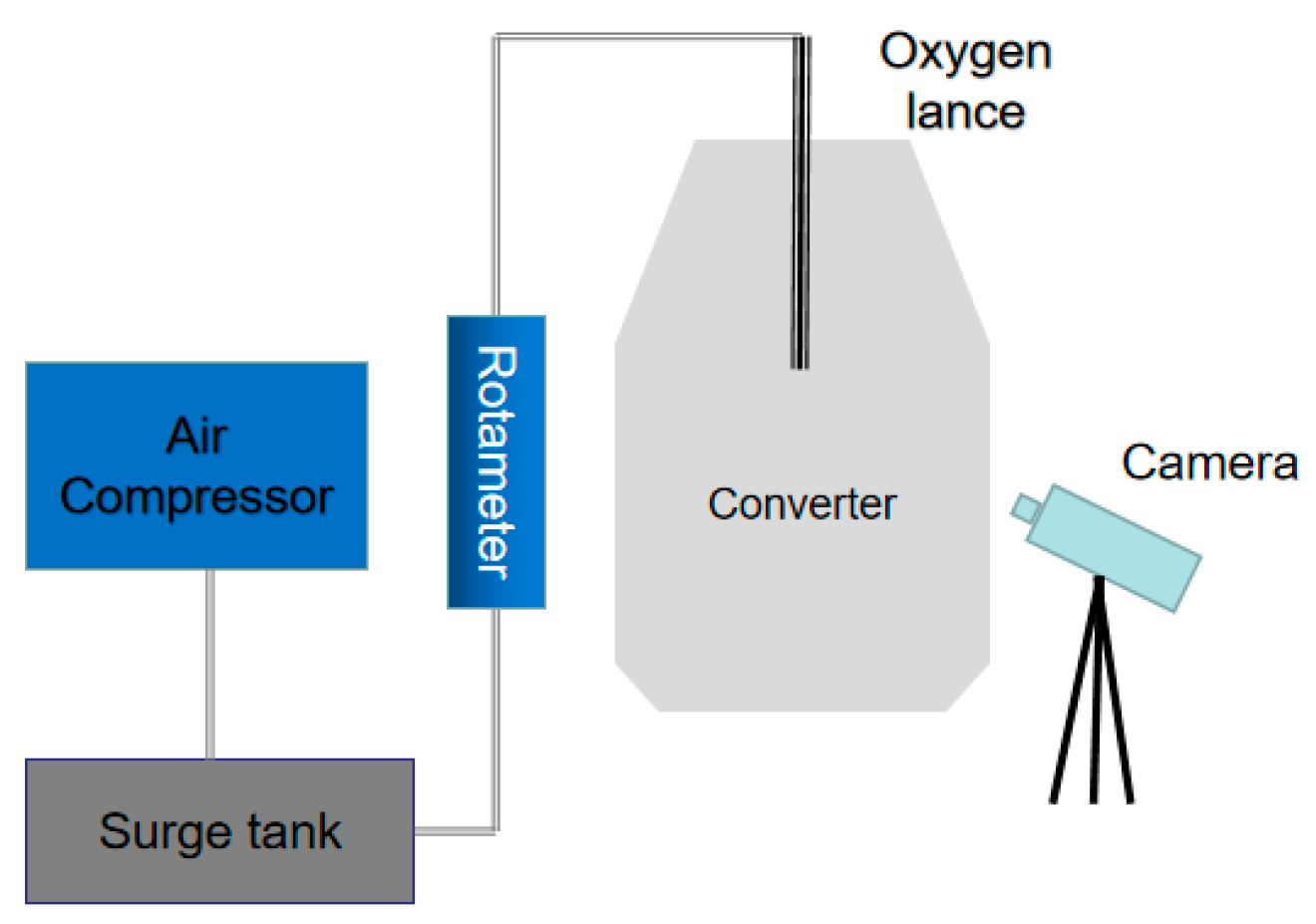
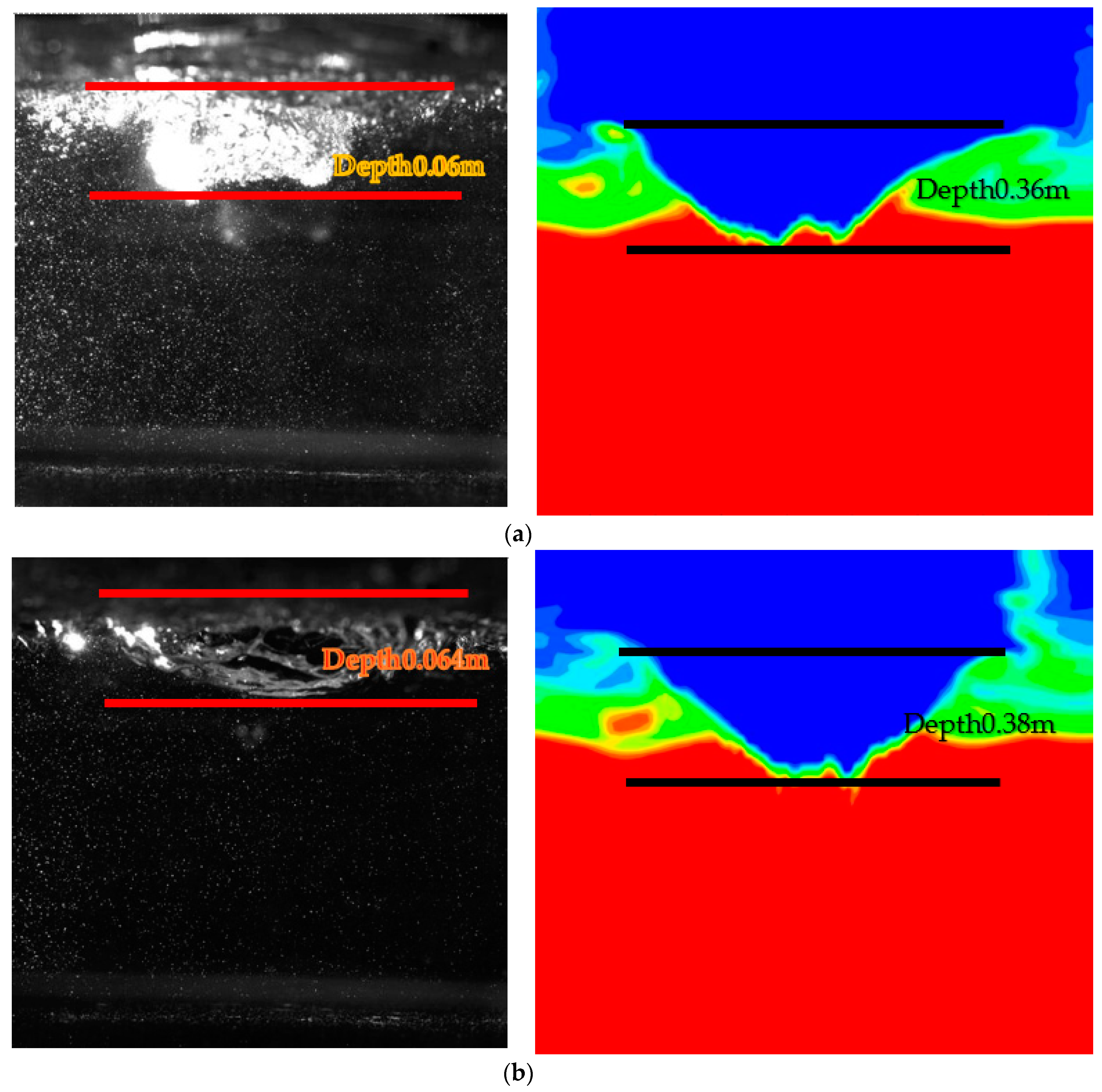
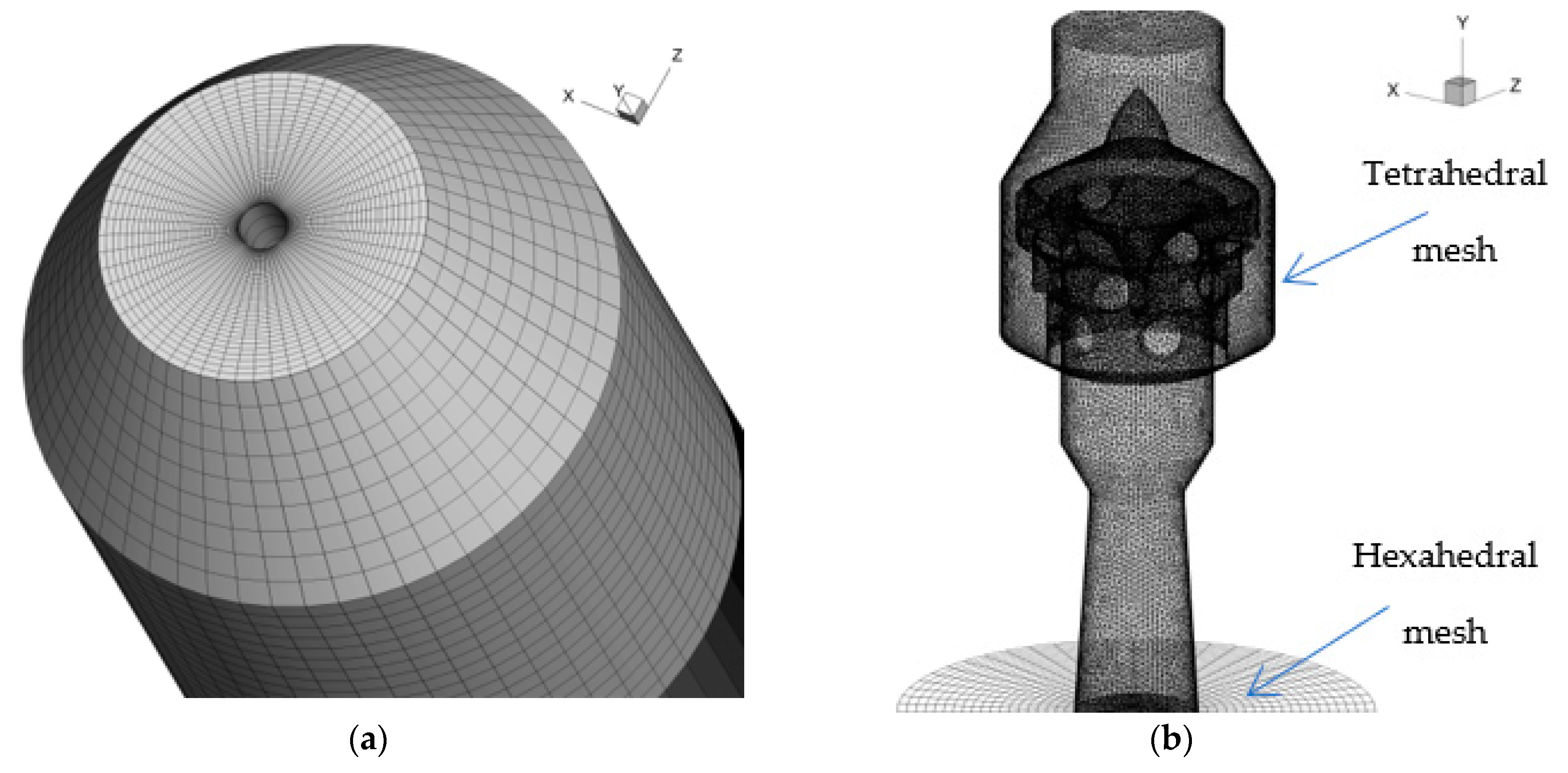
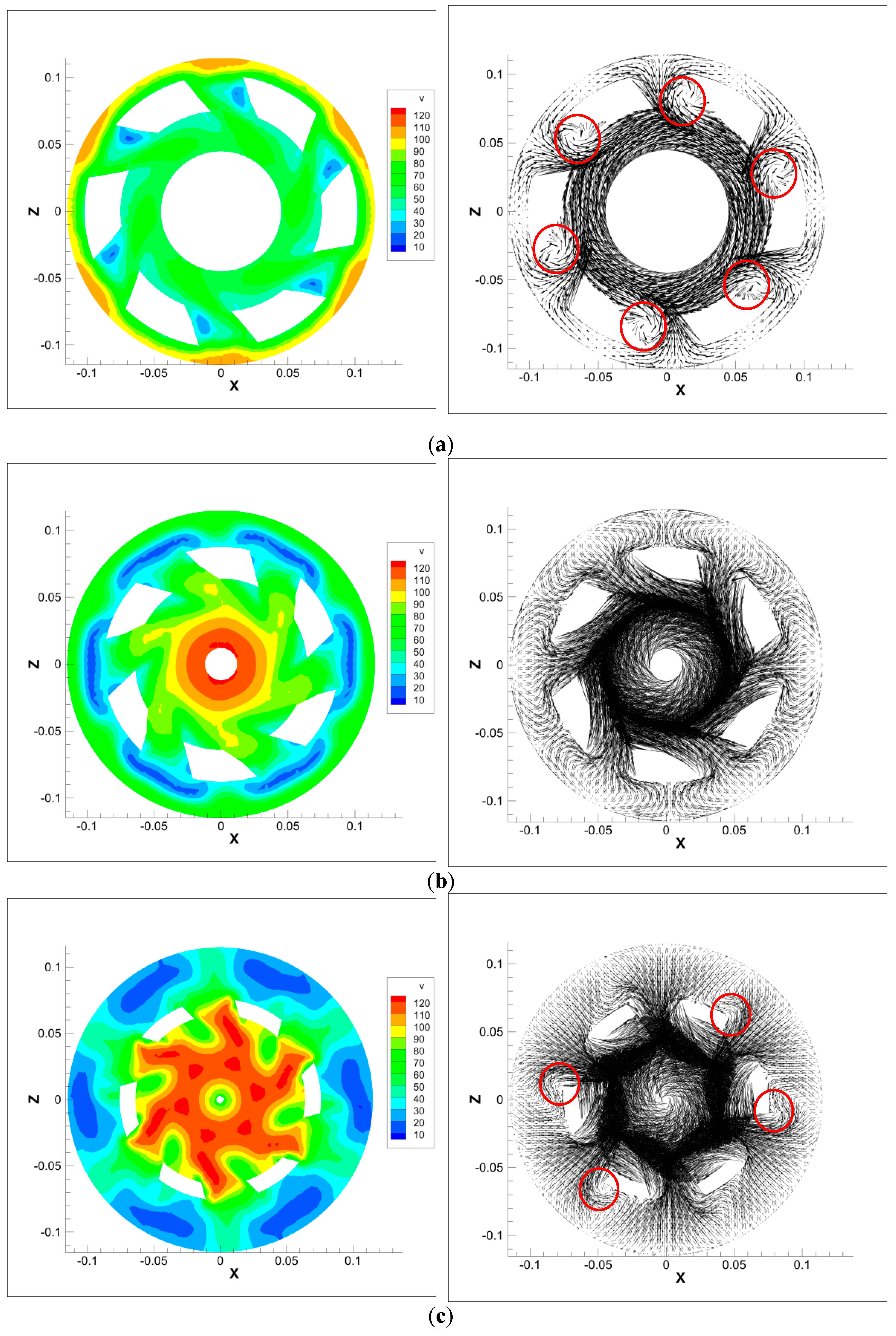
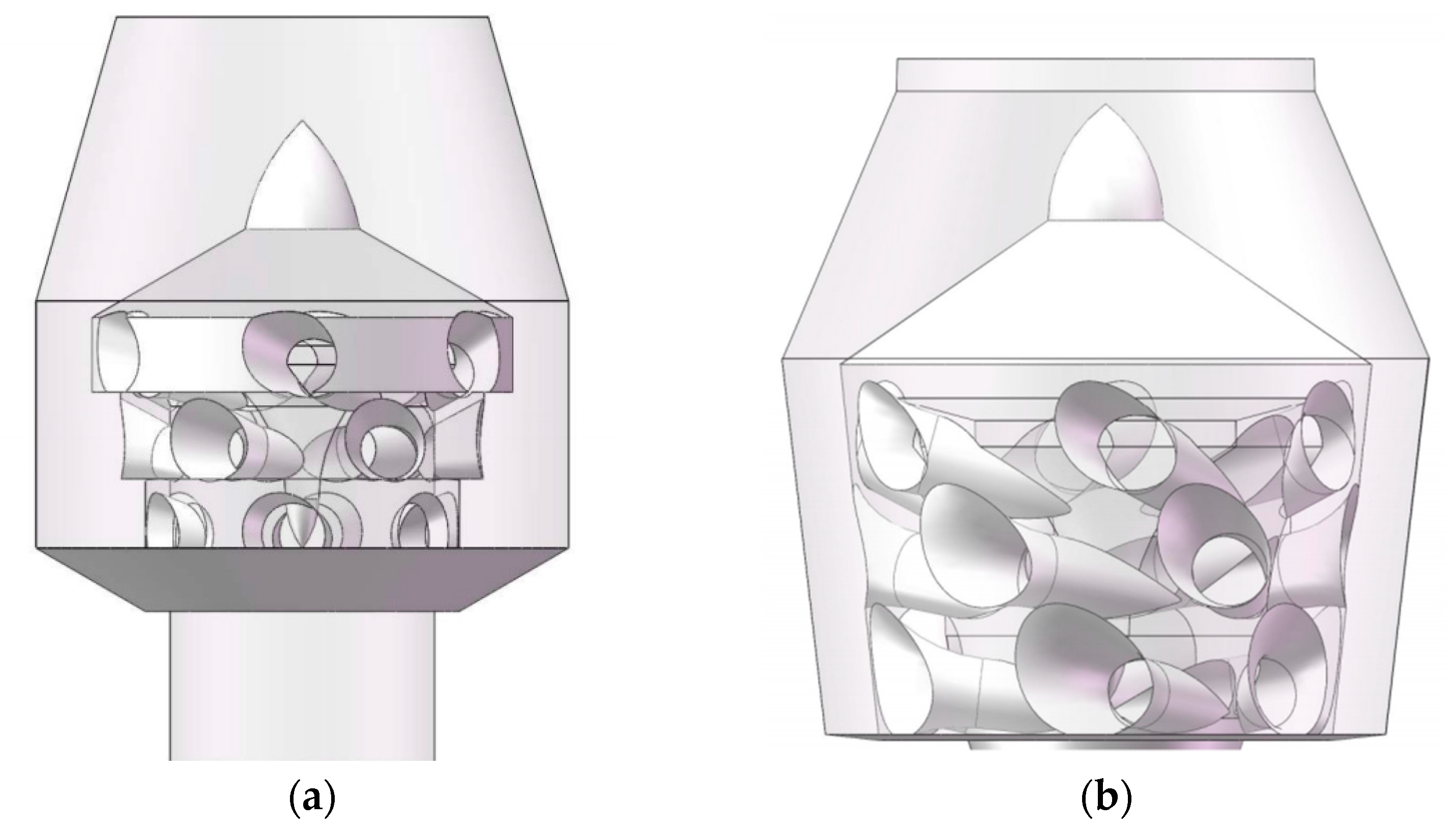
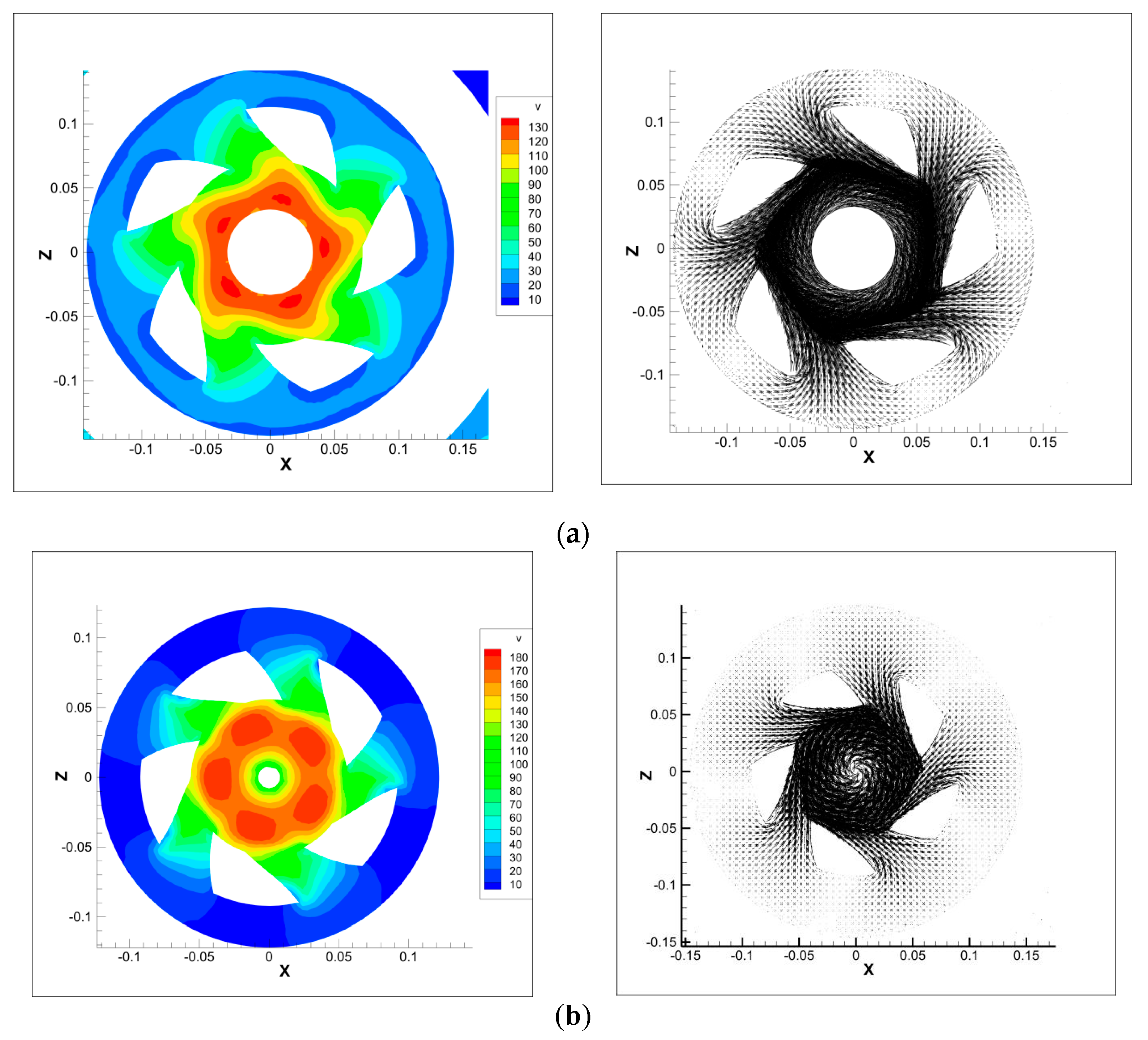
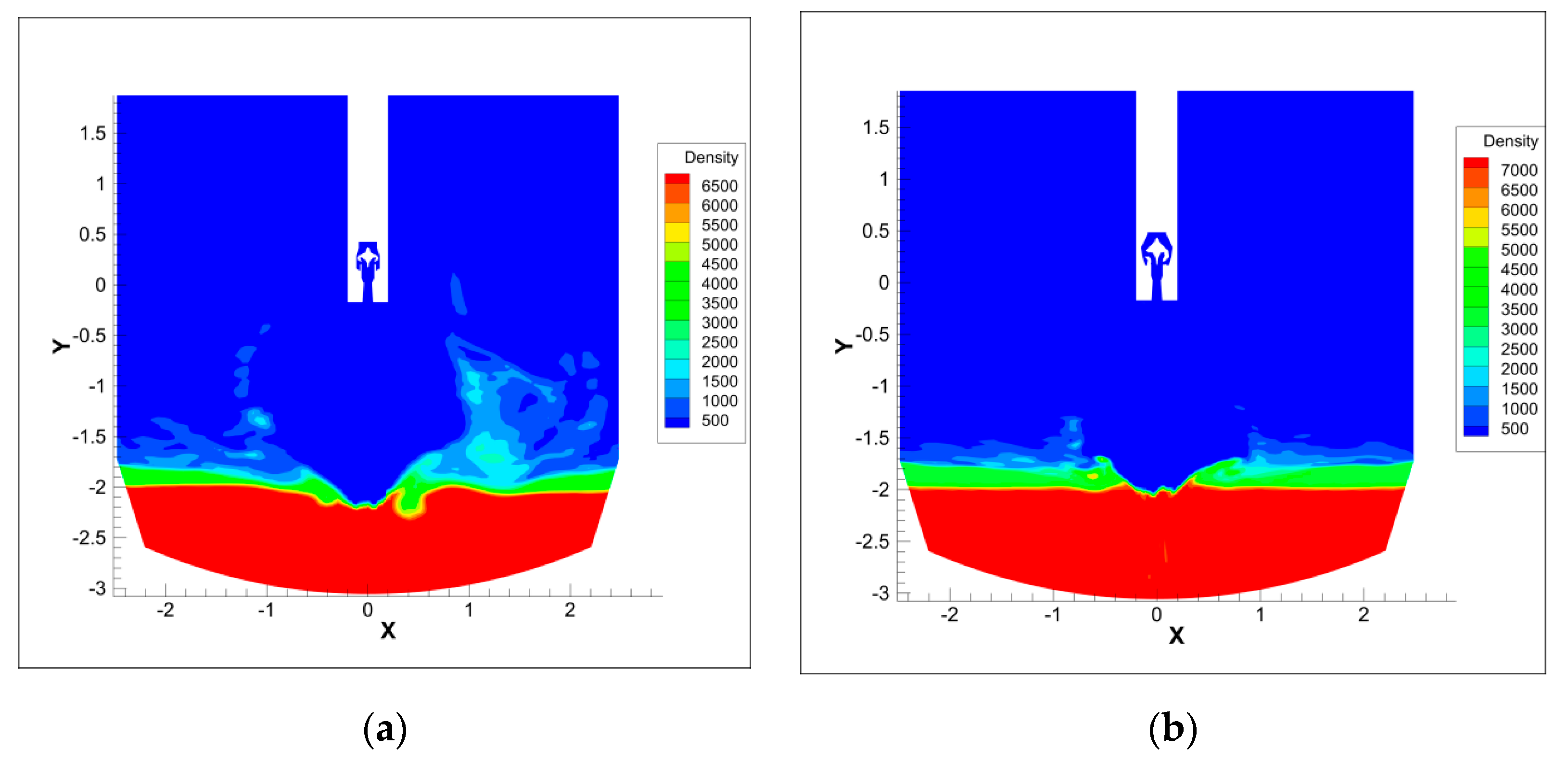
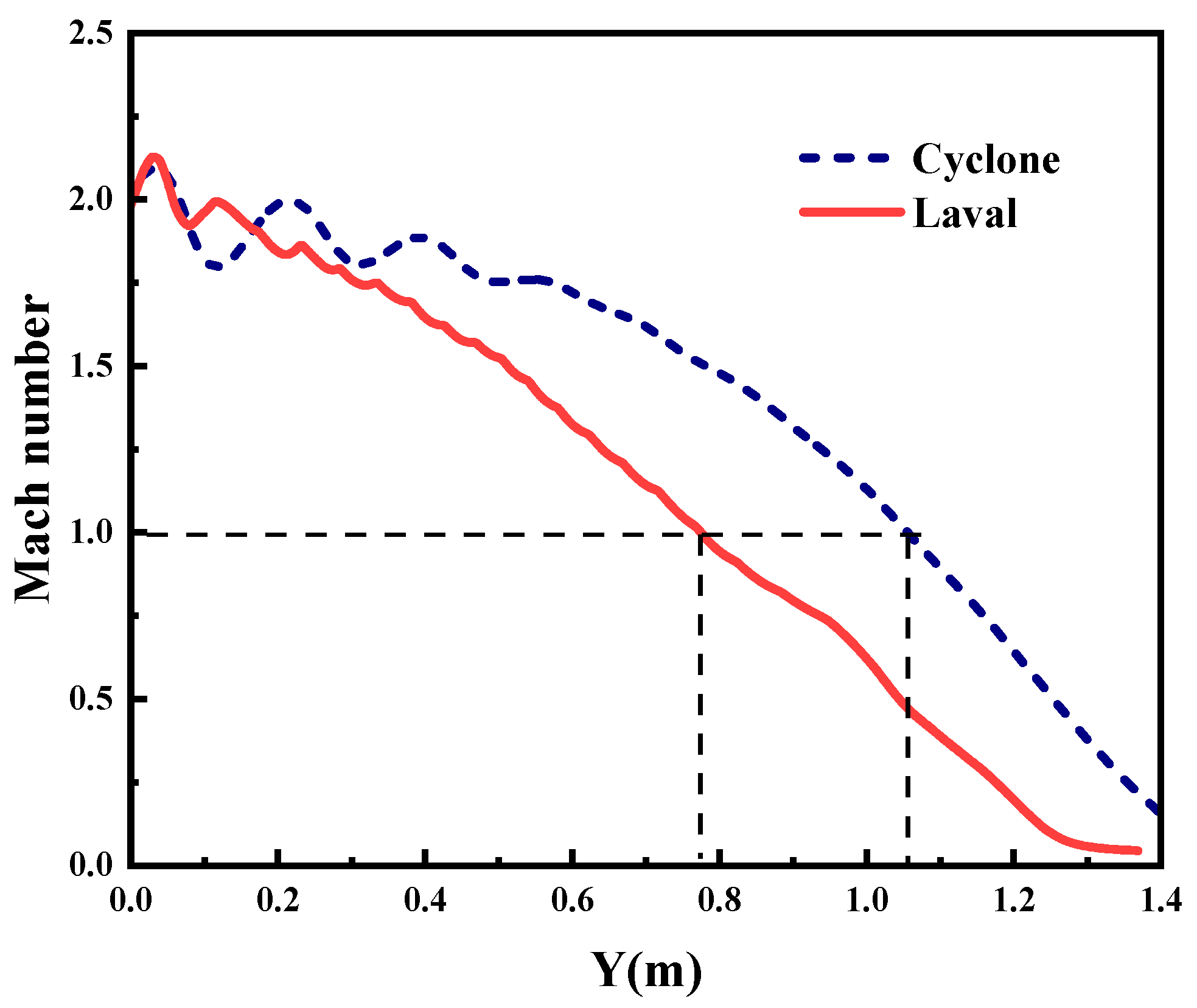
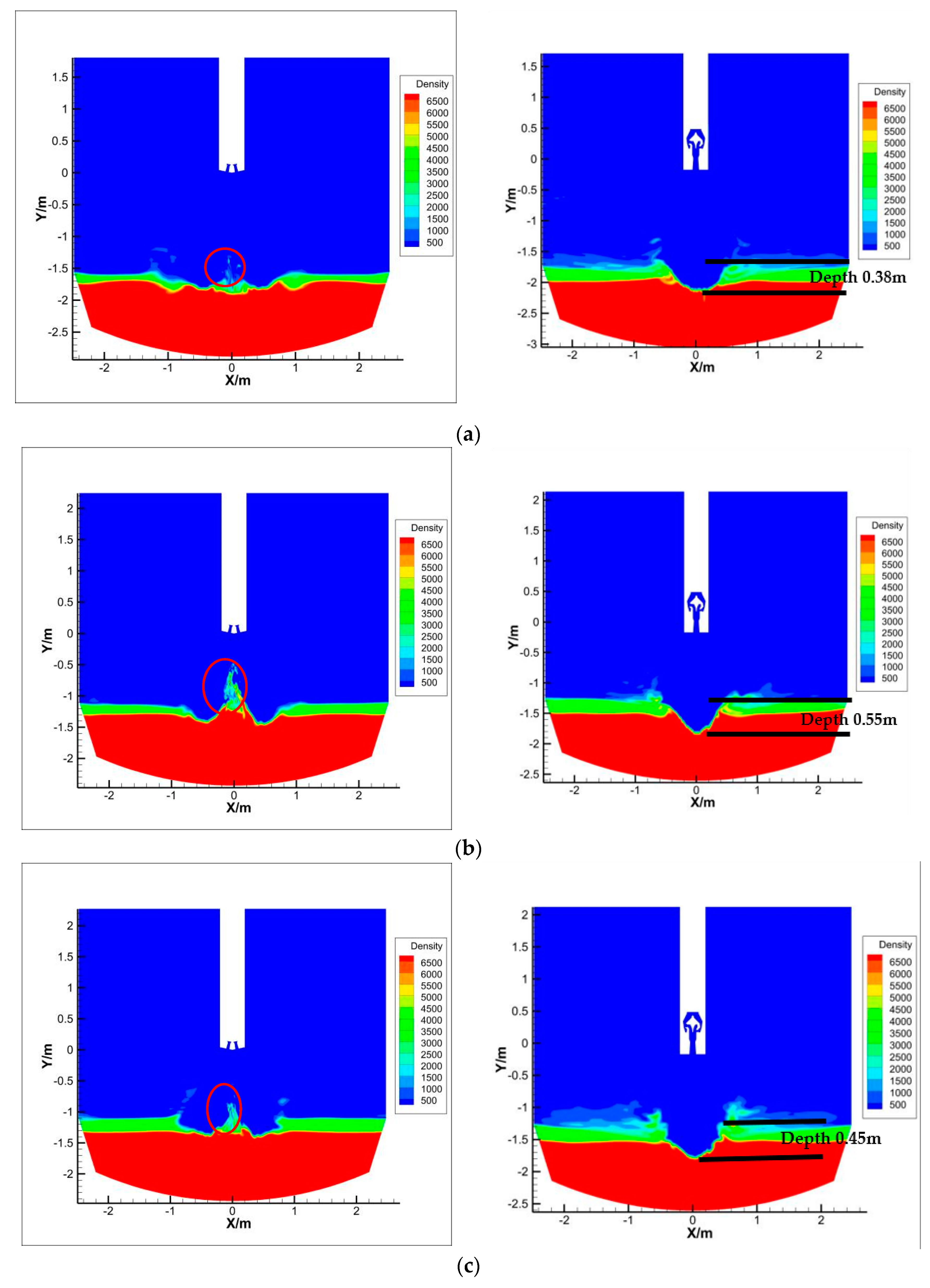
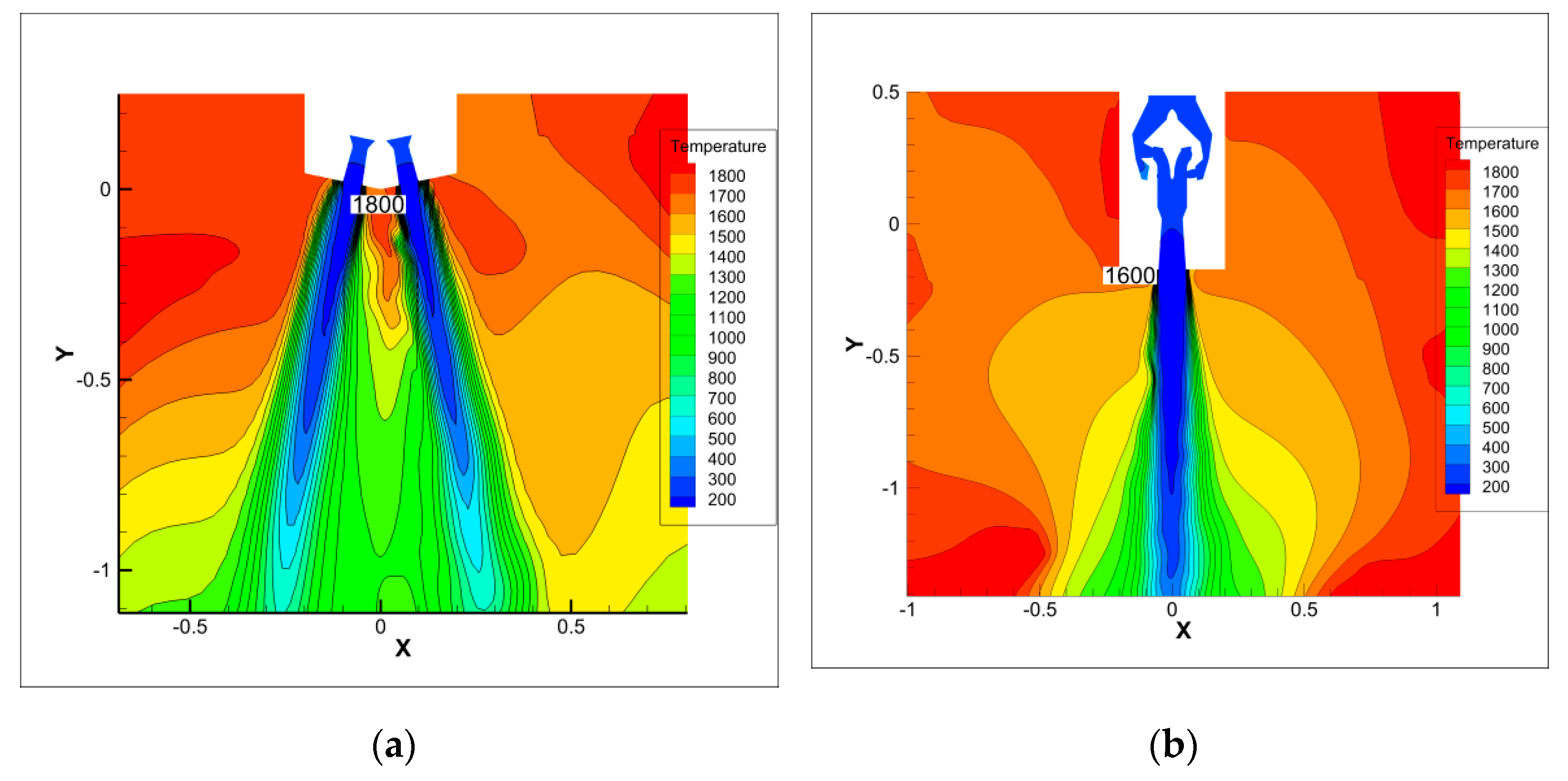
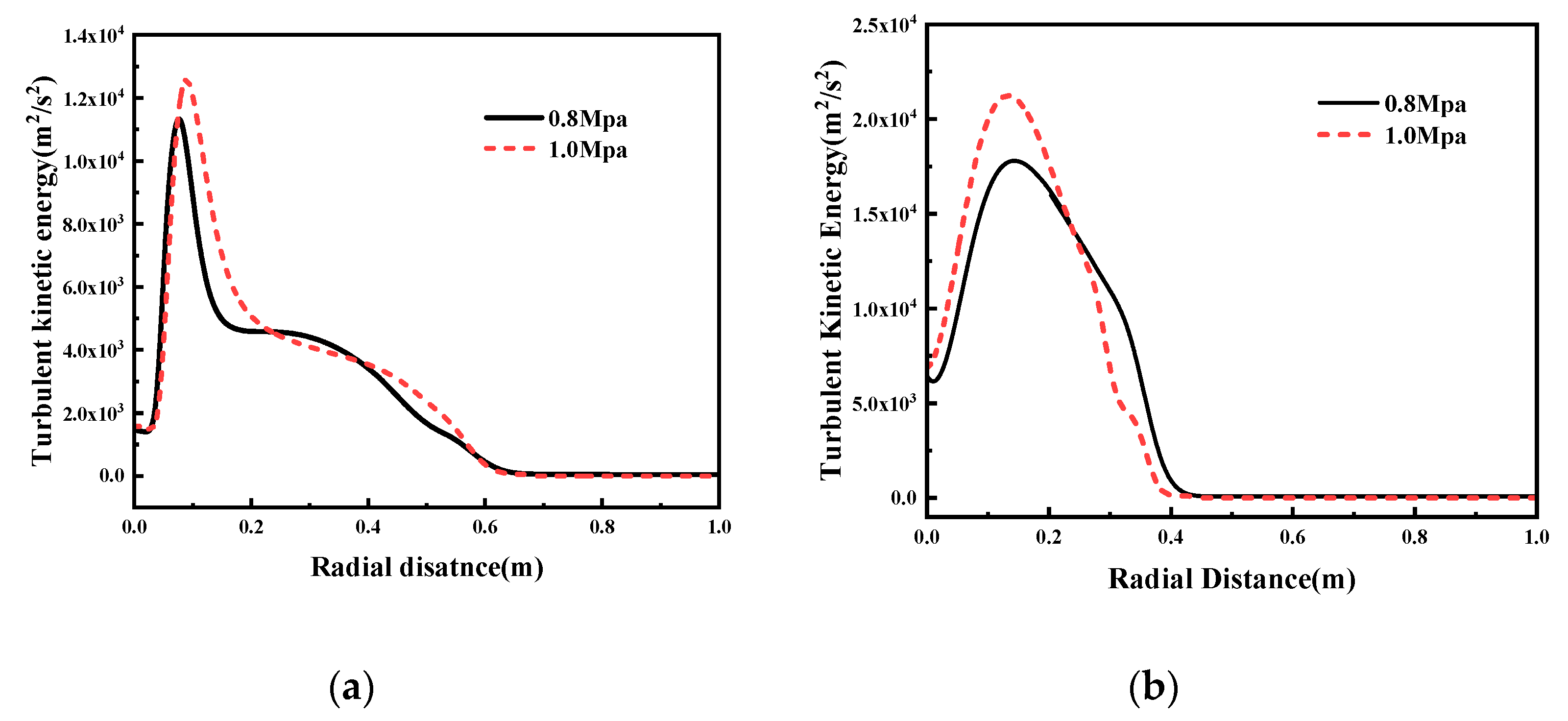

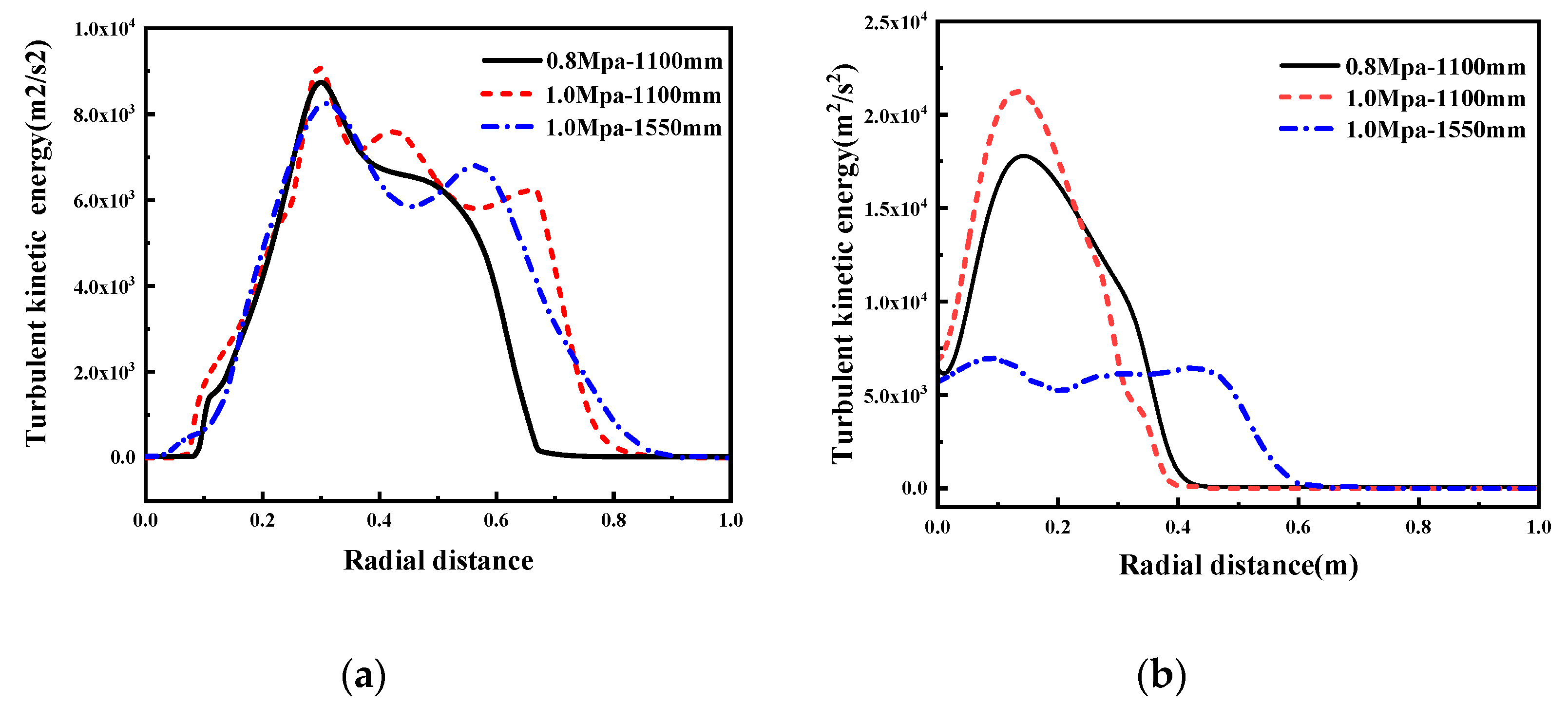
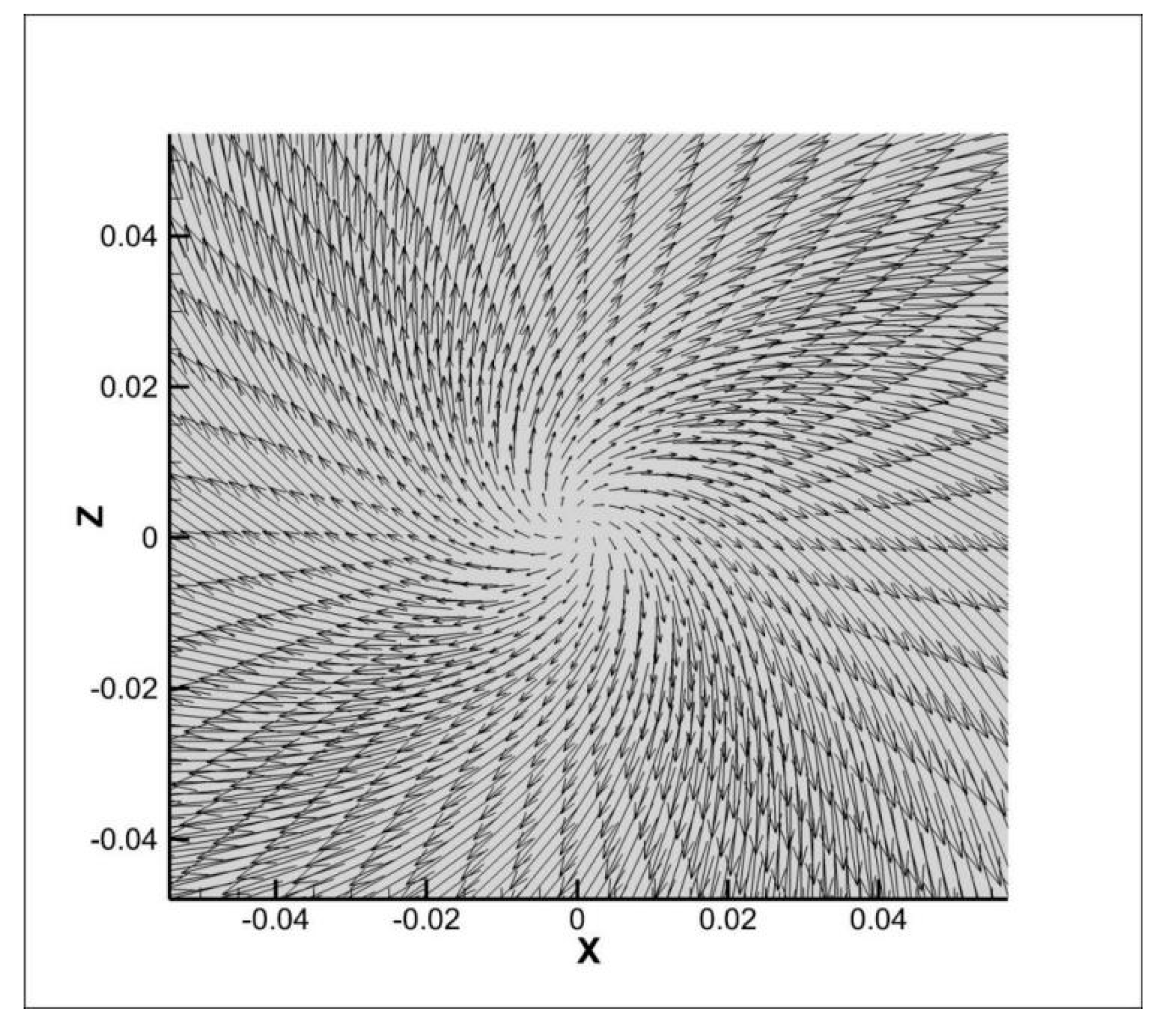
| Parameter | Prototype | Model |
|---|---|---|
| Bath height/mm | 1336 | 223 |
| Slag thickness/mm | 200 | 34 |
| Number of nozzles | 1 for Cyclone, 4 for Laval | 1 for Cyclone |
| Lance height/mm | 1550 and 1100 | 258 and 183 |
| Bath diameter/mm | 4960 | 827 |
| Throat diameter/mm | 80 for Cyclone, 40 for Laval | 14 for Cyclone |
| Top gas flow rate/Nm3 h−1 | 16,811 | 76 |
| Parameter | Molten Steel | Slag | Oxygen |
|---|---|---|---|
| Density/(kg·m−3) | 7100 | 3500 | Compressible |
| Viscosity/(kg·m−1·s−1) | 0.0065 | 0.1 | 1.19 × 10−5 |
| Thermal Conductivity/(W·m−1·K−1) | 40 | 1.7 | 0.0246 |
| Specific heat capacity(J·kg−1·K−1) | 670 | 1200 | 919.31 |
| Surface tension/(N·m−1) | 1.6 | 0.55 | – |
| Temperature/K | 1873 | 1873 | 300 |
| Lance Height (mm) | Laval Nozzle | Cyclone Nozzle | ||
|---|---|---|---|---|
| NB | R/F | NB | R/F | |
| 1100 | 5.96 | 29.78 | 20.82 | 61.18 |
| 1550 | 3.13 | 7.44 | 11.33 | 50.33 |
| Parameters | Laval Nozzle | Cyclone Nozzle |
|---|---|---|
| 0.8 Mpa-1100 mm | 2310 | 8880 |
| 1.0 Mpa-1100 mm | 2820 | 10,010 |
| 1.0 Mpa-1550 mm | 2230 | 5150 |
Publisher’s Note: MDPI stays neutral with regard to jurisdictional claims in published maps and institutional affiliations. |
© 2022 by the authors. Licensee MDPI, Basel, Switzerland. This article is an open access article distributed under the terms and conditions of the Creative Commons Attribution (CC BY) license (https://creativecommons.org/licenses/by/4.0/).
Share and Cite
Li, J.; Ma, Z.; Chen, C.; Zhang, J.; Wang, B. Behavior of Top-Blown Jet under a New Cyclone Oxygen Lance during BOF Steelmaking Process. Processes 2022, 10, 507. https://doi.org/10.3390/pr10030507
Li J, Ma Z, Chen C, Zhang J, Wang B. Behavior of Top-Blown Jet under a New Cyclone Oxygen Lance during BOF Steelmaking Process. Processes. 2022; 10(3):507. https://doi.org/10.3390/pr10030507
Chicago/Turabian StyleLi, Jun, Zheng Ma, Chaoyun Chen, Jieyu Zhang, and Bo Wang. 2022. "Behavior of Top-Blown Jet under a New Cyclone Oxygen Lance during BOF Steelmaking Process" Processes 10, no. 3: 507. https://doi.org/10.3390/pr10030507
APA StyleLi, J., Ma, Z., Chen, C., Zhang, J., & Wang, B. (2022). Behavior of Top-Blown Jet under a New Cyclone Oxygen Lance during BOF Steelmaking Process. Processes, 10(3), 507. https://doi.org/10.3390/pr10030507





